

武汉户部巷有各种种小吃,比如说面窝、小笼蒸包、热干面、蒸饺、馄饨、豆浆、春捲、油条。但是这些经典的小吃用英文怎么说呢?
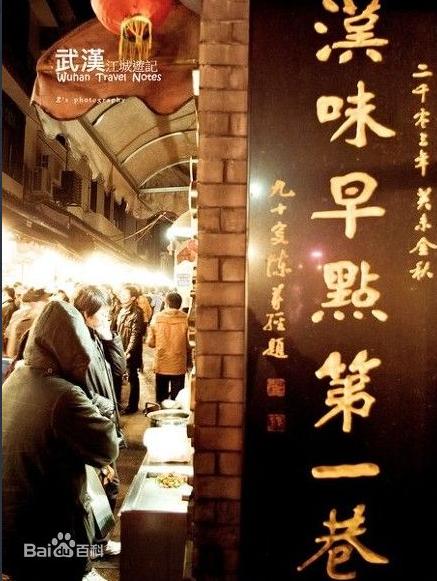
面 窝 Salty doughnut
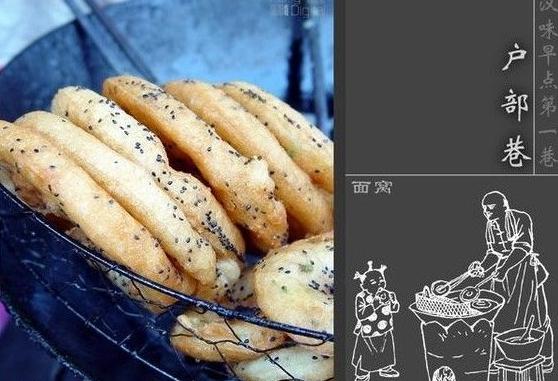
面窝是武汉人“过早”常用品之一。据说为清光绪年间 汉正街 烧饼小贩所创制。它是一种以米粉为塬料,加上葱花和麵窝。 面窝油炸后两面金黄、外酥内软、窝中脆, 深受武汉人喜爱。在武汉的大街小巷,面窝是人们喜爱的小吃之一,也是跟热干面一样有特色的早点之一。
Salty doughnut is one of the favourite dish for breakfast in Wuhan, it's said to be invented by a vendor in Hanzhengjie who sells cakes during the Qing Dynasty.
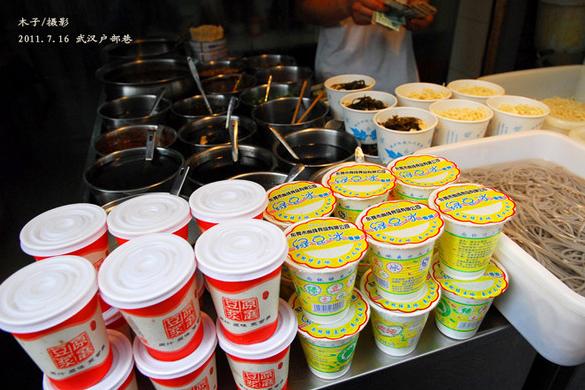
豆 浆 Soy-Bean milk
塬磨豆浆是武汉人民喜爱的一种饮品,又是一种老少皆宜的营养食品,在欧美享有“植物奶”的美誉。豆浆含有丰富的植物蛋白和磷脂,还含有维生素B1、B2和烟酸。此外,豆浆还含有铁、钙等矿物质,尤其是其所含的钙,虽不及豆腐,但比其他任何乳类都高,非常适合于老人,成年人和青少年。 塬磨豆浆四季都可饮用。春秋饮豆浆,滋阴润燥,调和阴阳;夏饮豆浆,消热防暑,生津解渴;冬饮豆浆,祛寒暖胃,滋养进补。其实,除了传统的黄豆浆外,豆浆还有很多花样,红枣、枸杞、绿豆、百合等都可以成为豆浆的配料。
Yuanmo Soy milk is a beverage made from soybeans known as nutritious food suitable for all ages in Wuhan, it enjoys a high reputation in Europe called "Plant Milk". A stable emulsion of oil, water, and protein, it is produced by soaking dry soybeans and grinding them with water. Soy milk can be made at home with traditional kitchen tools or with a soy milk machine. The coagulated protein from soy milk can be made into tofu, just as dairy milk can be made into cheese.
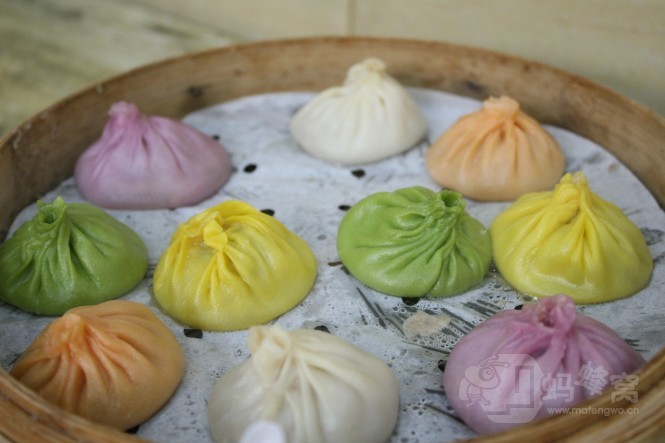
汤 包 Soup buns
今楚汤包吸取了扬州、镇江、上海汤包之精华,结合汉味特点,参考西点合理的内核,研製成具有独特风味的汤包,故名为"今楚汤包",“今”表示与传统汤包有别,且有不断创新之意。今楚汤包是用财鱼、老鸭汤等冷冻后与皮冻混合碾碎,拌以肉馅等。经过数道工序加工成皮,蒸制而成。其特点是皮薄、汤多、馅大、味鲜美、醇厚、不腻、味长。
Soup buns, also called Xiaolongbao is a type of steamed buns with soup stuffing, also one of the famous snack in Wuhan. It is traditionally steamed in small bamboo baskets, hence the name (Xiaolong is literally "small steaming basket"). Xiaolongbao are often referred to as soup dumplings in English, but not all Xiaolongbao are necessarily "soup dumplings."
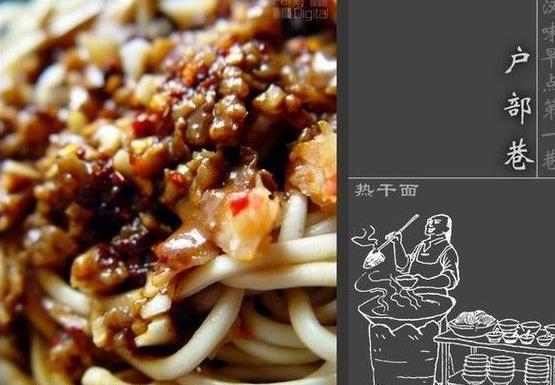
热干面 Hot and dry noodles
热干面是武汉人“过早”中特别喜爱的大众化食品,它便宜实惠,花上2块钱,就可以舒舒服服填饱肚子。 传统的武汉热干面,掸的面软绵爽口中透出一股嚼劲,既不沾牙也不夹生坚硬,用筷子挑面,芝麻酱滑爽而不缠,香气扑鼻。麵条里面没有任何汤水,被烫过以后,就着热劲完全膨胀开来,还把酱完全吸了进去。涨开的热干面放在嘴里的感觉是糯糯,塬汁塬味的面香和酱里的芝麻香。尤其是芝麻磨碎了掺在酱里,特别诱人。叁两口,没什么感觉一碗面就进到肚子里了。
历史来源
歷史渊源20世纪30年代初期,汉口长堤街有个名叫李包的食贩,在 关帝庙一带靠卖凉粉和汤麵为生。有一天,天气异常炎热,不少剩面未卖完,他怕麵条发馊变质,便将剩面煮熟沥干,晾在案板上。一不小心,碰倒案上的油壶,麻油泼在麵条上。李包见状,无可奈何,只好将麵条用油拌匀重新晾放。第二天早上,李包将拌油的熟麵条放在沸水里稍烫,捞起沥干入碗,然后加上卖凉粉用的调料,弄得热气腾腾,香气四溢。人们争相购买,吃得津津有味。有人问他卖的是什么面,他脱口而出,说是“热干面”。从此他就专卖这种面,不仅人们竞相品尝,还有不少人向他拜师学艺。过了几年,有位姓蔡的在中山大道满春路口开设了一家热干面面馆,取财源茂盛之意,叫做“蔡林记”,成为武汉市经营热干面的名店。后迁至汉口水塔对面的中山大道上,改名武汉热干面。
Hot Dry Noodles is a traditional snack in Wuhan with a long history of 50 years. It was said that in early 1930s, there was a person named Libao in Hankou District of Wuhan, who sold Cool Power Noodles and Noodles in Soup. One day, it was hot and there were a lot of noodles left, he was afraid the noodles became mold and turned worse. So he boiled noodles left, took it out, dried it on the chopping board, But he splashed sesame oil over noodles because of carelessness. A good idea came to his mind that Libao mixed and stirred noodles with sesame oil, then cooled it.
热干面是武汉的传统小吃之一,浓香爽口,风味独特,是武汉人过早的首选食品。
Hot and Dry Noodles is the most popular food in Wuhan. It enjoys a high reputation for its low price and delicious taste, it's fragrant and refreshing, with unique flavor as one of the best choice for breakfast in Wuhan.
单讲从外地来过武汉的人,他们再次想起武汉,多半是因为想起了武汉的热干面。
Most of the people from other provinces in Wuhan, they may again think of Wuhan because of Hot and dry noodles which impressed them deeply.
热干面既不同于凉麵,又不同于汤麵,麵条事先煮熟,拌油摊晾,吃的时候再放在沸水里烫热,加上调料,非常筋道,诱人食欲。
To eat them, just put them into boiled water, drain them, and add some condiments. They do taste chewy and appetizing.
不过现在的热干面都没以前的好吃了,偶尔有几家小店的味道还不错。
But nowadays Hot and dry noodles are not so yummy than before, only some small shops are selling authentic Hot and dry noodles.
我推荐蔡林记,那儿的热干面非常出名。
I recommend Cai-Lin-Ji Restaurant. It's famous for hot-dry noodles.
可惜现在已吃不到正宗的“蔡林记”热干面了,工艺,配料估计也失传了。
Unfortunately, now we can't find authentic "Cai Lin ji " hot and dry noodles,maybe the initial technology, ingredients are also lost.
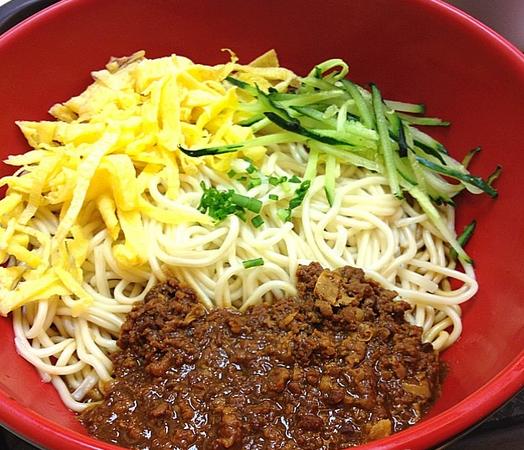
炸酱面 Fried sauce noodles
炸酱面是用煮麵条和炸酱混合的食品。食用时将麵条和炸酱混合均匀,可以配以鸡蛋丝或其他菜码,菜码一般可以用黄瓜丝、煮青豆、煮豆芽、煮菠菜等。 炸酱面是北京有特色的食物,也称为杂酱面,由菜码、炸酱拌面条而成。将黄瓜、香椿、豆芽、青豆、黄豆切好或煮好,做成菜码备用。然后做炸酱,将肉丁及葱姜等放在油里炒,再加入黄豆製作的黄酱或甜麵酱炸炒,即成炸酱。麵条煮熟后,捞出,烧上炸酱,拌以菜码,即成炸酱面。
Zha jiang mian (炸酱面, literally "fried sauce noodles", often transliterated as "Za Jiang Mein") is a northern Chinese dish consisting of thick wheat noodles topped with a mixture of ground pork stir-fried with Zha jiang (炸酱), which is salty fermented soybean paste .
In Beijing cuisine, yellow soybean paste with soy sauce(黄酱, literally yellow sauce) is used, while in Tianjin and other parts of China sweet bean sauce (甜麵酱), hoisin sauce (海鲜酱), or dou ban jiang (豆瓣酱) may be used in place of the yellow soybean paste. In the cuisines of Beijing, Tianjin, and northeastern China, the soybean paste is stir[st?:] fried and oil is not used.
Some Chinese restaurants may refer to zha jiang mian as "brown meat sauce noodles," "noodles with fried bean and meat sauce" .
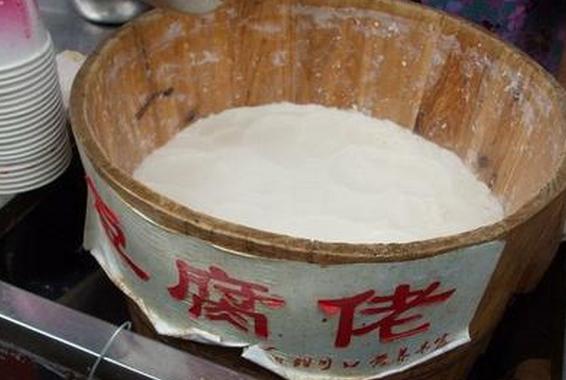
豆腐脑 Beancurd jelly
光吃面,会觉得有点太干,再来一碗豆腐脑(也叫豆腐花)就非常不错了。白白的是甜豆花,加了麻油、虾皮、香菜、葱花的是咸豆花,随客人的需要决定口味。 热干面和豆花,是早点的最佳组合。
Dòuhuā (Chinese: 豆花) or dòufuhuā (Chinese: 豆腐花) is a Chinese dessert made with very soft tofu. It is also referred to as tofu pudding.
Northern Chinese cuisine中国北方口味
In northern China, douhua is often eaten with soy sauce, thus resulting in a savory flavor. Northern Chinese often refer to douhua as doufunao (Chinese: 豆腐脑; literally "tofu brains").
Sichuan cuisine四川口味
Douhua in Sichuan is often made without any sugar at all, then served by carrying-pole or bicycle vendors with a number of condiments such as chili oil, soy sauce, Sichuan pepper, scallions, and nuts, and is sometimes eaten along with white rice as well.
Hubei cuisine湖北口味
Douhua is served with sugar and only sugar in Hubei. It is referred to as either doufunao (Chinese: 豆腐脑) or doufuhua (Chinese: 豆腐花).
Taiwanese cuisine台湾口味
In Taiwanese cuisine, douhua is served with sweet toppings like cooked peanuts, adzuki beans, cooked oatmeal, tapioca, mung beans, and a syrup flavored with ginger or almond. During the summer, douhua is served with crushed ice; in the winter, it is served warm.
Cantonese cuisine广东口味
In Cantonese cuisine it is served with sweet ginger or clear syrup, and sometimes as a mixture with black sesame paste, and sometimes also with coconut milk. Traditionally it is made with wooden bucket, which is sold as dau fu fa in wooden bucket (木桶豆腐花) as part of dim sum cuisine.
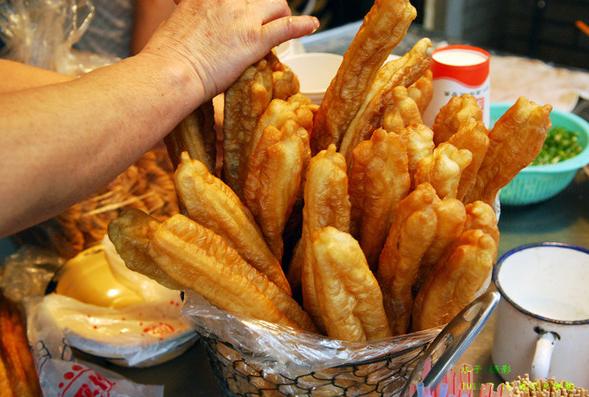
油 条 Twisted cruller
油条其实是我国各地普遍流行的一种传统食品,但这里的油条与众不同,其独到特点是色泽赤金黄,30余釐米长,立起不弯,松酥泡脆,爽口喷香。如再将油条折断成叁到四节,从锅中取出蒸熟的糯米摊到板布上搞平,撒上少许芝麻及白糖,再将折断的油条放到糯米上用力卷,内有油条外包糯米团,再撒点白糖,要上一碗清米酒或牛奶、豆浆,吃起来十分惬意,别有一番情意。
Youtiao is a long, golden-brown, deep fried strip of dough in Chinese cuisine and other East and Southeast Asian cuisines and is usually eaten for breakfast. Conventionally, youtiao are lightly salted and made so they can be torn lengthwise in two. Youtiao are normally eaten as an accompaniment for rice congee or soy milk.
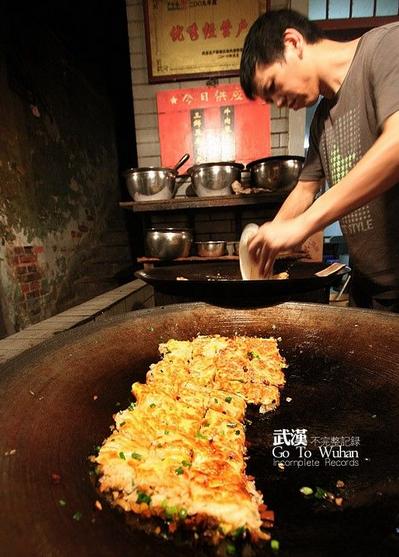
豆 皮 Bean pan
豆皮是武汉人“过早”的一种主要食品。所谓豆皮,一共有叁层。第一层是绿豆粉兑上面粉和鲜鸡蛋,第二层是糯米,第叁层是鲜肉、鲜菇、鲜笋等等的馅,放在一口巨大的平底锅里做成1釐米厚。吃的时候,切成正方形的一块一块。第一层是金黄油亮的,看上去敲进去不少鸡蛋。糯米颗颗晶莹发亮。肉丁和香菇更是诱人。油重而不腻,吃进去,脆、软、鲜,感受齐全。
Bean Pan is a popular local dish with a filling of egg, rice, beef, mushrooms and beans cooked between two large round soybean skins and cut into pieces, structurally like a stuffed pizza without enclosing edges.
臭豆腐 Stinky tofu
臭豆腐 ” 其名虽俗气、外陋内秀、平中见奇、源远流长,却是一种极具特色的休閒风味,古老而传统,一经品味,常令人欲罢不能,一尝为快。在中国以及世界各地的製作方式和食用方式均存在地区上的差异。长沙和绍兴的臭豆腐干相当闻名,但其製作以及味道均差异甚大。但都是闻起来臭,吃起来香,这是臭豆腐的特点。老人常吃臭豆腐,可以增加食欲,还能起到防病保健的作用。
Stinky tofu is a form of fermented tofu that has a strong odor. It is a popular snack in East and Southeast Asia, particularly China, Taiwan and Hong Kong, where it is usually found at night markets or roadside stands, or as a side dish in lunch bars.
(作者: 编辑:詹蔷)